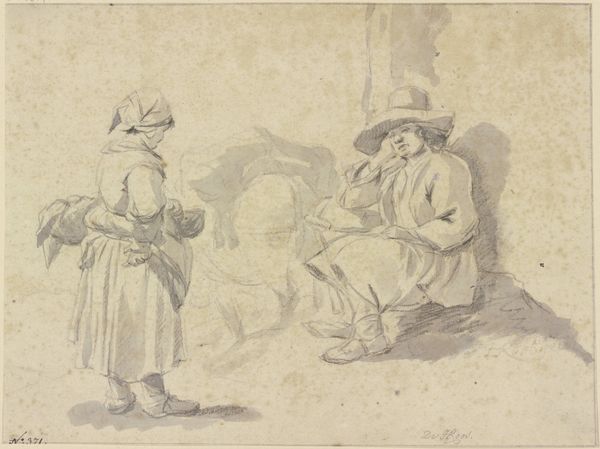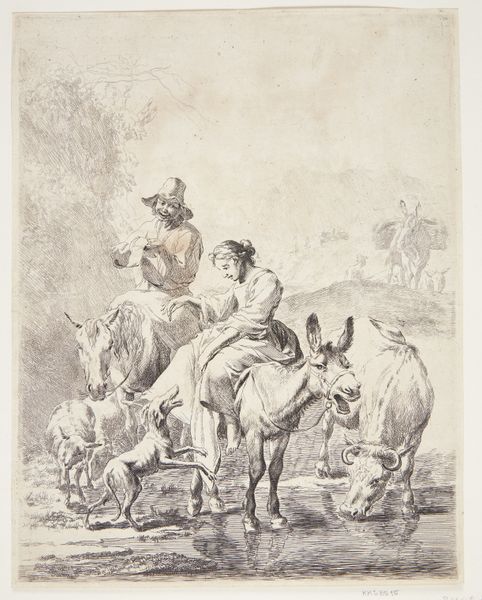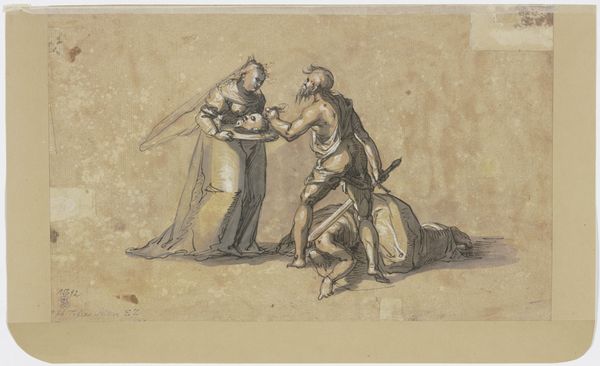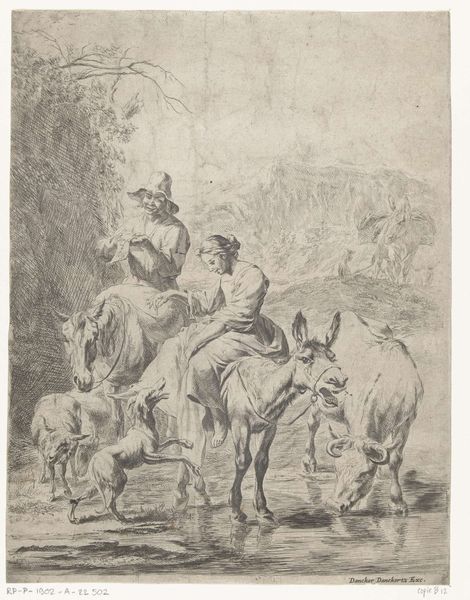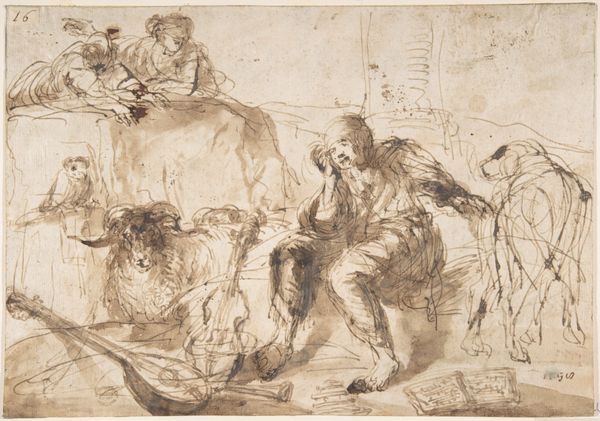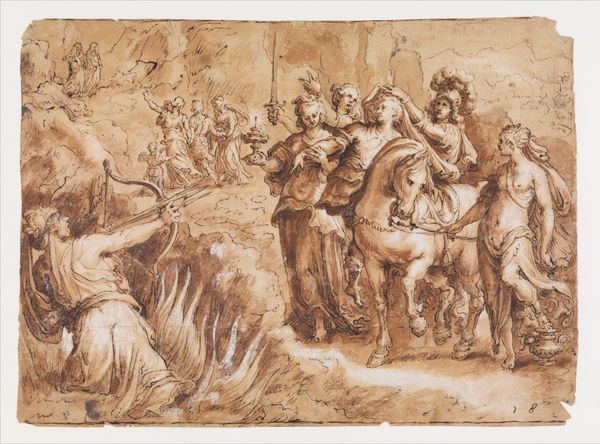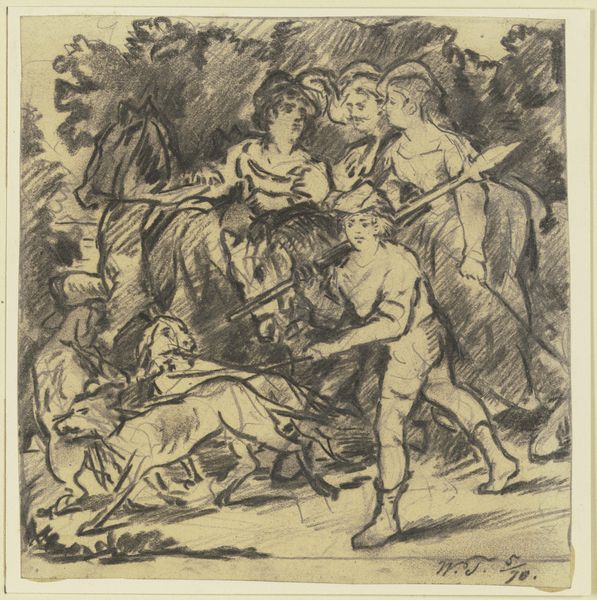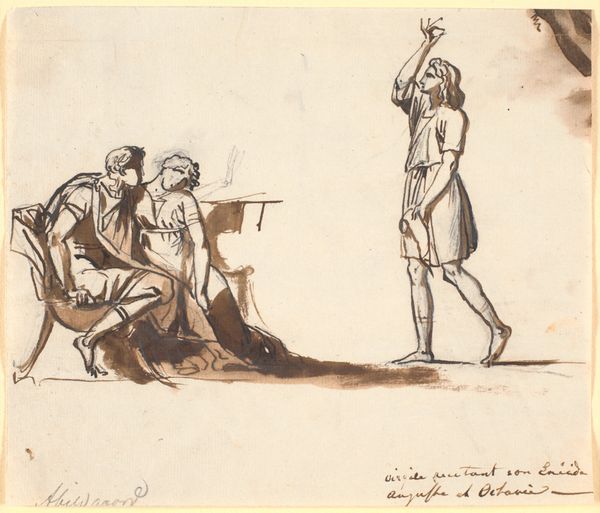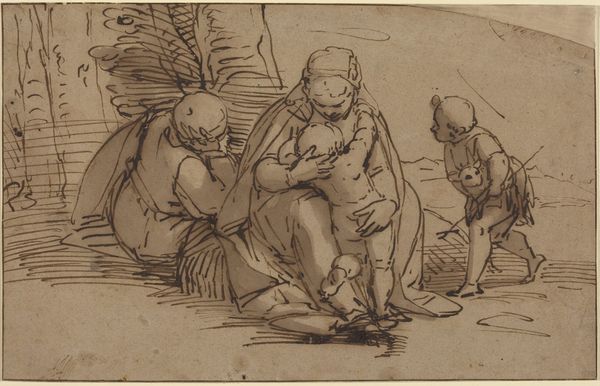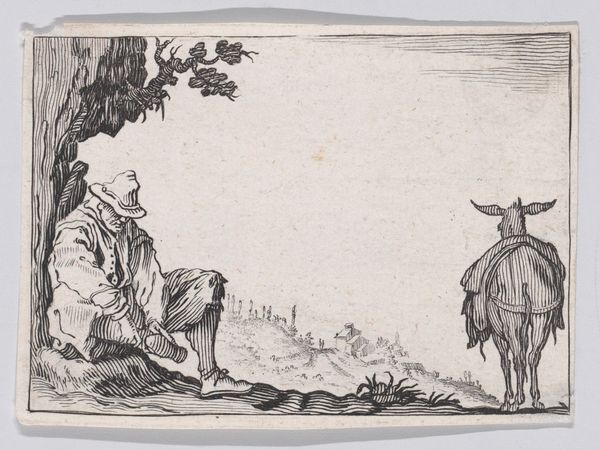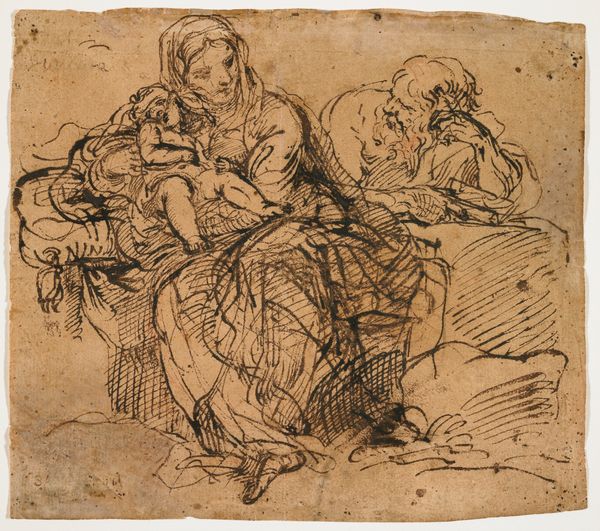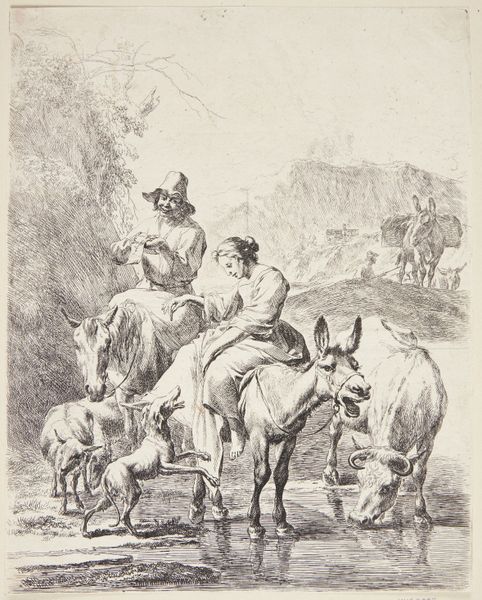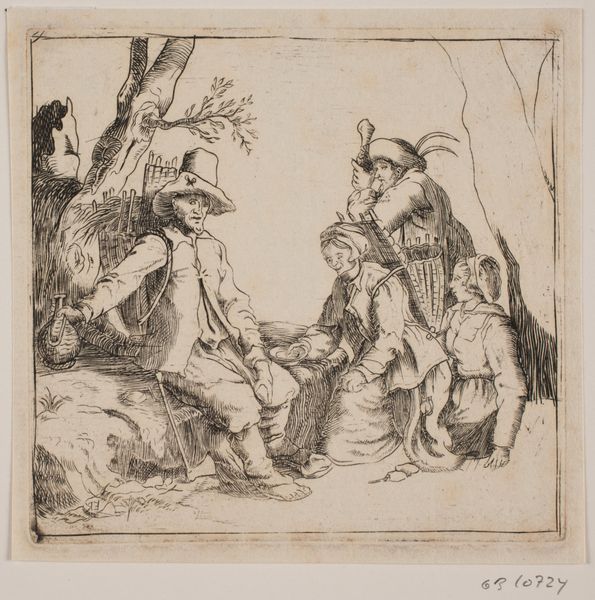
drawing, coloured-pencil, red-chalk, paper, ink, chalk, charcoal
#
drawing
#
coloured-pencil
#
baroque
#
red-chalk
#
landscape
#
charcoal drawing
#
figuration
#
paper
#
ink
#
coloured pencil
#
chalk
#
genre-painting
#
charcoal
Copyright: Public Domain
Claude Lorrain created this drawing of a dancing woman with a tambourine and a bagpipe player using pen and brown ink with brown wash. The tambourine and bagpipes evoke ancient pastoral scenes of festivity and revelry, connecting us to the Dionysian rites of classical antiquity. Consider the tambourine, its rhythmic jingles have been used since ancient times in religious and celebratory contexts across cultures, from the Middle East to Greece. Its sound is associated with ecstatic rituals, a tool to induce trance and connect with the divine. Similarly, the bagpipe, though less ancient, shares in this history of summoning primal emotions. In this drawing, we see echoes of this ecstatic, liberated spirit. These instruments, depicted together, create a powerful emotional dynamic. It invites viewers to tap into deep-seated memories and primal instincts. This drawing is not merely an image, but an invitation to partake in a timeless dance, to feel the pulse of history through symbols that continue to resonate within our collective psyche.
Comments
stadelmuseum about 2 years ago
⋮
The light pentimenti on the figures of the dancing girl and the sitting bagpipe player indicate that this is in preparation for a composition. The dancer appears again, slightly modified, in two almost identical paintings, “The Marriage of Isaac and Rebecca” (National Gallery, London), dated 1648, and “The Mill” (Galleria Doria Pamphili, Rome) from the same year (MRP 113). Her Greek chiton reveals that she is not a contemporary dancer. The sitting musician does not appear in the two paintings and was probably discarded before the composition was finalised. A bagpipe player can be found in several earlier variations of the rural dance theme on which the painting of 1648 is based. In accordance with Claude’s practice, the animals and landscape must have been added later to make this sketch an independent composition completed with brown wash. The thin lines in red chalk, which are largely concealed by the dancer, could be preparatory strokes for an academic figure study. On the back of the sheet the legs of another academic study are still visible.
Join the conversation
Join millions of artists and users on Artera today and experience the ultimate creative platform.
